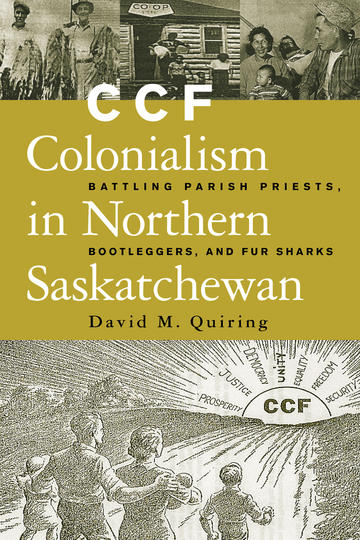About BC Books Online
BC Books Online was created for anyone interested in BC-published books, and with librarians especially in mind. We'd like to make it easy for library staff to learn about books from BC publishers - both new releases and backlist titles - so you can inform your patrons and keep your collections up to date.
Our site features print books and ebooks - both new releases and backlist titles - all of which are available to order through regular trade channels. Browse our subject categories to find books of interest or create and export lists by category to cross-reference with your library's current collection.
A quick tip: When reviewing the "Browse by Category" listings, please note that these are based on standardized BISAC Subject Codes supplied by the books' publishers. You will find additional selections, grouped by theme or region, in our "BC Reading Lists."
Saskatchewan’s Co-operative Commonwealth Federation (CCF), the forerunner of the NDP, is often remembered for its humanitarian platform and its pioneering social programs. But during the twenty years it governed, it wrought a much less scrutinized legacy in the northern regions of the province. Until the 1940s, churches, fur traders, and other influential newcomers held firm control over Saskatchewan’s northern region. Following its rise to power in 1944, the CCF made aggressive efforts to unseat these traditional powers and install a new socialist economy and society in largely Aboriginal communities. The next two decades brought major changes to the region as well-meaning government planners grossly misjudged the challenges that confronted the north and failed to implement programs that would meet its needs. Northerners lacked the voice and political clout to determine policies for their half of the province, and the CCF effectively created a colonial apparatus, imposing its own ideas and plans in those communities without consulting residents. While it did ensure that parish priests, bootleggers, and “fur sharks” no longer dominated the north, it failed to establish a workable alternative. In an elegantly written history that documents the colonial relationship between the CCF and northern Saskatchewan, David Quiring draws on extensive archival research and oral history to offer a fresh look at the CCF era. This examination will find a welcome audience among historians of the north, Aboriginal scholars, and general readers interested in Canadian history.
David M. Quiring teaches in the Department of History at the University of Saskatchewan.
- Short-listed, Scholarly Book Award, Saskatchewan Book Awards
- Short-listed, First Book Award, Saskatchewan Book Awards
Quiring builds his critique carefully and painstakingly by examining the CCF ideology, the new economic and social policies the government pursued, and the consequences of these policies for the northern population ... Quiring’s attack on the traditional image of the CCF makes this a worthwhile study.
David Quiring’s study constitutes a radical departure from earlier hagiography. It is acidic in demonstrating how far short the CCF fell in applying its egalitarian ideology to the rugged northern half of the province, whose population then, as now, was overwhelmingly Aboriginal in origin ... for as this book makes clear, socialism as a popular movement stopped where the prairie ended and the northern forest began.
Quiring demonstrates quite convincingly that a fundamental contradiction underlay the CCF's Aboriginal policy. On the one hand, the CCF sought to reserve 'traditional' occupations, such as agriculture, fishing, and trapping, for Aboriginals. On the other, the party sought to modernize the Aboriginal way of life, with the ultimate goal of assimilating Aboriginal people into the mainstream economy and culture. CCF Colonialism effectively demonstrates that the party was caught in a classic Catch 22, its own policies contributing to the sense of displacement and marginality its policies professed to address.
David Quiring’s work is an exciting addition to a growing body of scholarship on the Canadian North, both in its territorial and provincial dimensions. Although focusing on the policies developed by the CCF government in Saskatchewan toward the northern regions of the province from 1944 to 1964, Quiring’s research offers many original insights into a host of related issues. It will become compulsory reading for those with an interest in the modern history of Saskatchewan, the workings of the first social democratic government in North America, and the evolution of Aboriginal-non-aboriginal relations in postwar Saskatchewan.



